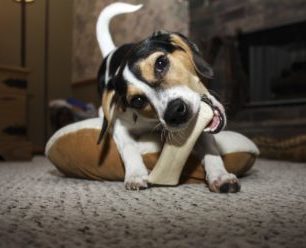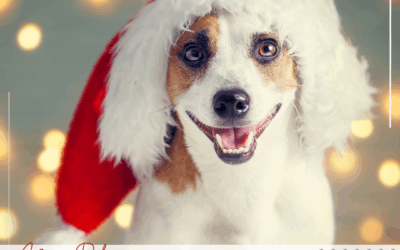Recently I’ve had a lot of new resource guarding clients and many of them are puppies, which got me thinking. Is this a by-product of Covid? Are people home more and therefore taking more things away from their dogs? Did they just get a puppy from a bad breeder due to the shortage of dogs because of Covid and maybe there’s some genetic factors or lack of socialization at play? Are people falling victim to bad advice from the internet about what to do with puppies for resource guarding (RG) and they’re making it worse? All of the above? A combination? I don’t know for sure but I do know I’m getting lots of resource guarding cases lately! Doodles and Goldens top the list out of my client base. (I have opinions on that, maybe for another blog.)
Guarding can be scary for an owner and it’s easy to take it personally that your dog is guarding items from you. It’s also easy think your dog is a “bad” dog and want to punish him to “make him stop the bad behavior.” But here’s the thing: Guarding is a normal behavior. Guarding doesn’t mean your dog is a bad dog or that there is anything wrong with him.
And while domesticated, companion dogs don’t need to guard for survival, like their wild counterparts, that doesn’t mean they don’t still have the “software” in their brain that tells them to guard. The fact that our dog companions don’t guard more often is sort of a miracle, considering all other canids – free-roaming dogs, wild dogs, wolves, dingos and coyotes guard 100% of the time and “get it right” when they’re guarding. Our domesticated dogs can be a little buggy with their software, which is why sometimes they guard things we don’t understand (dirty Kleenex anyone?)
As my mentor, Jean Donaldson says in her book about resource guarding, Mine,
“Guarding food, objects, mates and spaces are highly adaptable traits in a natural environment. If dogs had to fend for themselves tomorrow, guarders would have the survival and reproductive edge over non-guarders.”
I’ll be focusing on resource guarding over a few weeks in April’s posts but for today let’s talk about how to help prevent resource guarding in puppies (or adult dogs who don’t guard).
One core thing we want to teach puppies during their critical socialization is that good things happen when we approach them when they have valuable items. How do we do this? Well, it’s NOT by taking stuff away to show them we can. This can actually cause resource guarding. I’ll cover the what not to do in a different post but for now here’s what to do:
First, if you have a puppy under 14 weeks of age, do prevention exercises ASAP! For resource and food guarding we want to practice these exercises. Here’s what each of those looks like from some recent board and train puppies I’ve had.
***This process is NOT for dogs who currently guard.***
Resource guarding prevention with bully stick
Food guarding prevention
If you’d like to see more prevention videos, you can see my whole playlist here.
Second, if your dog steals something or has an item you want to remove from them, always trade up – NEVER just take it away. Offer chicken or cheese or meatballs – something much better than what the dog has. Show the dog the food, and then toss it a few feet away. Most dogs will abandon the item they had to go collect the food you tossed. This is an emergency food spill. It’s not really training persay, but it prevents you from having to wrangle something from the dog and prevents any negative association to you approaching the dog.
If you have a guarder, whether it’s food, toys, location, favorite person or high value chews, reach out to me for help. You may also be interested in my other blog posts How To Help A Dog Who Guards Bully Sticks and How To Help A Dog Who Food Guards. Resource guarding sessions are easily done via remote video sessions so it doesn’t matter where you are in world – I can help you!
Happy training!
![]()




